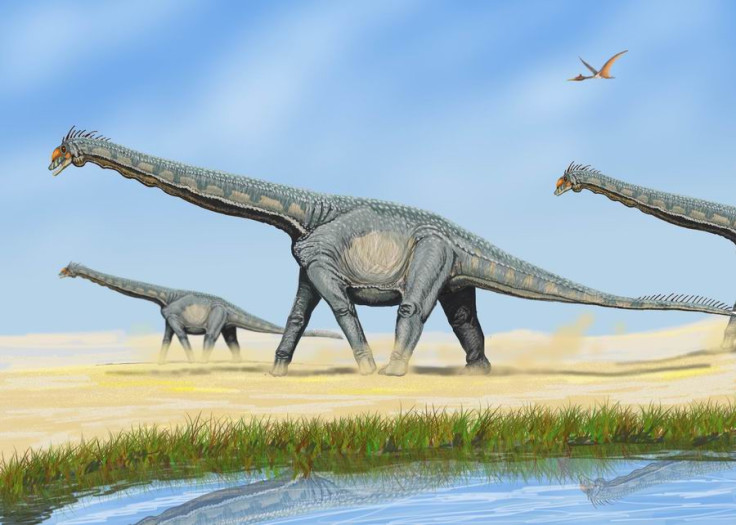100 Million-Year-Old Giant Dinosaur Species 'Rukwatitan Bisepultus' Discovered in Tanzania

Paleontologists have discovered a new species of titanosaurian dinosaur in Tanzania, a member of the large-bodied sauropods which thrived during the middle of the Cretaceous Period.
Ohio University scientists uncovered the species, named Rukwatitan bisepultus, embedded in a cliff wall in the Rukwa Rift Basin in the southwest of the country. Using professional excavators and coal miners, the team unearthed vertebrae, ribs, limbs and pelvic bones.
Although many fossils of titanosaurians have been discovered around the globe, especially in South America, few have been recovered from the continent of Africa. The diverse group includes some of the heaviest creatures to ever walk the on the planet.
CT scans of the fossils, combined with detailed comparisons with other sauropods, revealed unique features that suggested an animal that was different from previous finds—including those from elsewhere in Africa. The find was published in the Journal of Vertebrate Paleontology.
"Using both traditional and new computational approaches, we were able to place the new species within the family tree of sauropod dinosaurs and determine both its uniqueness as a species and to delineate others species with which it is most closely related," lead author Eric Gorscak, a doctoral student in biological sciences at Ohio University.
Rukwatitan bisepultus lived approximately 100 million years ago, in the final period of the dinosaur age. Despite their large size, titanosaurian sauropods were herbivorous dinosaurs - recognisable by their long necks and wide stance.
Although not among the largest of titanosaurians, Rukwatitan is estimated to have a forelimb reaching two metres and may have weighed as much as several elephants.
Co-author Patrick O'Connor, a professor of anatomy in the Ohio University Heritage College of Osteopathic Medicine, said the environment of the Rukwa Rift Basin may have led to a distinct species.
"There may have been certain environmental features, such as deserts, large waterways and/or mountain ranges, that would have limited the movement of animals and promoted the evolution of regionally distinct faunas," he explained, adding that additional research was needed.
The study also contributes to fleshing out the global portrait of titanosaurians, which lived in habitats across the globe. Scientists have found fossils for more than 30 titanosaurians in South America, compared to just four in Africa.
"Much of what we know regarding titanosaurian evolutionary history stems from numerous discoveries in South America — a continent that underwent a steady separation from Africa during the first half of the Cretaceous Period," Gorscak said.
"With the discovery of Rukwatitan and study of the material in nearby Malawi, we are beginning to fill a significant gap from a large part of the world."
Last week, Paleontologists discovered an exceptionally complete skeleton of a new sauropod dinosaur in Argentina, called Dreadnoughtus schrani, which weighed more than seven T. rex.
© Copyright IBTimes 2025. All rights reserved.






















